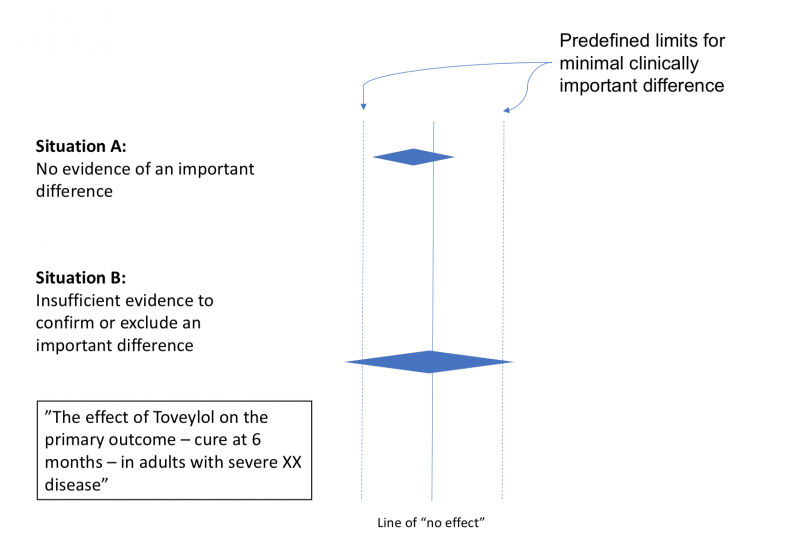
Recently the Cochrane Review groups were invited to take part in a competition. They were presented with a hypothetical scenario and a task. These are described below, along with the winning entries.
- Below is a description of two common situations in Cochrane Reviews. The data relate to "The effect of ‘Toveylol’ (a fictious intervention) on the primary outcome – cure at 6 months – in adults with a given disease”.
- For each situation – A and B, and for each of the following two circumstances – the review groups were asked to write a short statement as you would see in the 'Authors’ Conclusions' section of a Cochrane Review. Each statement could be one or more sentences but should be concise.
- The two alternative circumstances described are (i) where the GRADE rating* is “low quality”, and (ii) where is it “very low quality”.

There were eight entries. David Tovey, Cochrane's Editor in Chief, awarded the prize to the entries below:
| A (i) | A (ii) | B (i) | B (ii) |
Joint winning entry | Low quality evidence suggests that there may be little or no difference in the proportion of patients cured at 6 months.
| The quality of the evidence relating to the primary outcome – cure at 6 months – is very low, so it is uncertain whether or not Toveylol has any effect (on this outcome).
| The low quality evidence identified is insufficient to allow us to determine whether or not there is a clinically important difference in the proportion of patients cured at 6 months.
| The quality of the evidence relating to the primary outcome – cure at 6 months – is very low, so it is uncertain whether or not Toveylol has any effect (on this outcome).
|
Joint winning entry | Low certainty evidence suggests that Toveylol has little or no effect on cure at 6 months.
| Evidence suggesting that Toveylol has little or no effect on cure at 6 months is very uncertain; however, any effect is likely to be small.
| Low certainty evidence suggests that Toveylol may have little or no effect at 6 months but important effects cannot be confirmed or excluded.
| Evidence suggesting that Toveyol has little or no effect on cure at 6 months is very uncertain and important effects cannot be confirmed or excluded.
|
The winners have been notified.
You can learn more about how to interpret the findings of a review in this learning module, which is part of the Cochrane Interactive Learning course on Conducting an Intervention Review. In the module you can learn how to interpret the results of your statistical analysis, reporting bias, and use the GRADE approach to judging and reporting on the certainty of evidence.
*The GRADE approach is a system for rating the quality of a body of evidence in systematic reviews and other evidence syntheses. The quality of evidence reflects the extent to which we are confident that an estimate of the effect is correct. More information about GRADE can be found here.
![GRADE [opens in new window] detailed explanation of GRADE can be found here: https://training.cochrane.org/grade-approach](/sites/uk.cochrane.org/files/uploads/screen_shot_2018-04-30_at_17.00.05.png)
